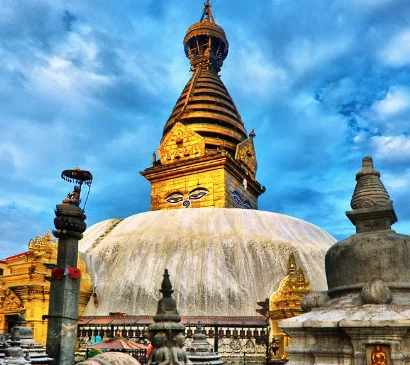Nepal
Overview of Nepal
1. Geography
- Capital: Kathmandu
- Area: Approximately 147,516 square kilometers (56,956 square miles).
- Topography: Nepal features a diverse landscape that includes the towering Himalayas in the north, hilly regions in the middle, and the Terai plains in the south.
- Major Landmarks: Mount Everest (Sagarmatha), Annapurna range, and several national parks and conservation areas.
2. Political Structure
- Nepal is a federal democratic republic.
- The President is the head of state, while the Prime Minister is the head of government.
- The country has a multi-tiered government system with various provinces and local governments.
3. Economy
- The economy of Nepal is primarily agrarian, with agriculture employing a significant portion of the population.
- Tourism is a vital sector, driven by trekking, mountaineering, and cultural heritage.
- Other important sectors include remittances from Nepalis working abroad, manufacturing, and services.
4. Culture
- Nepal has a rich cultural tapestry influenced by various ethnic groups, languages, and religions.
- The country is known for its festivals, traditional music, dance, and arts, with major festivals including Dashain, Tihar, and Holi.
- The official language is Nepali, and the predominant religions are Hinduism and Buddhism.
5. Tourism
- Nepal is a popular destination for trekkers and adventurers, offering numerous trekking routes, including the Everest Base Camp trek and the Annapurna Circuit.
- Cultural tourism is also significant, with attractions like UNESCO World Heritage Sites in Kathmandu Valley, including Pashupatinath Temple, Swayambhunath (Monkey Temple), and Bhaktapur Durbar Square.
- Adventure sports such as white-water rafting, paragliding, and jungle safaris are also popular.
6. Transportation
- The main international gateway is Tribhuvan International Airport (KTM) in Kathmandu.
- Domestic flights connect various regions of the country, while road networks are used for overland travel.
- Public transportation includes buses, taxis, and cycle rickshaws, especially in urban areas.
7. Climate
- Nepal experiences a diverse climate due to its varied geography, ranging from tropical in the Terai region to alpine in the Himalayas.
- The country has four main seasons: spring, summer, autumn, and winter, with the best trekking conditions generally found in spring (March to May) and autumn (September to November).
8. Education and Healthcare
- Nepal has made progress in improving literacy rates, particularly in urban areas, but challenges remain in rural regions.
- The healthcare system includes both public and private facilities, with ongoing efforts to improve access and quality of care.
Conclusion
Nepal is a captivating country with a rich cultural heritage, stunning natural landscapes, and a welcoming populace. It offers a unique blend of adventure, spirituality, and history, making it a favored destination for travelers from around the world. If you have specific questions or need more information about a particular aspect of Nepal, feel free to ask!


